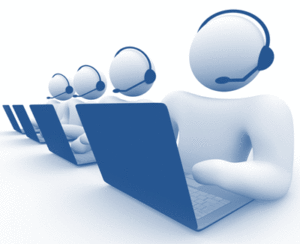 Our annual challenges and priorities survey, as well as our project experience, show that high attrition, absence and adherence issues, and the uphill battle to gain budget approval for additional staff remain pain points for many centers. While technology is not a “white knight” riding in to solve the staffing problems, it can be used effectively to target workload reduction.
Our annual challenges and priorities survey, as well as our project experience, show that high attrition, absence and adherence issues, and the uphill battle to gain budget approval for additional staff remain pain points for many centers. While technology is not a “white knight” riding in to solve the staffing problems, it can be used effectively to target workload reduction.
Leveraging the front end of self-service, even if it’s just information gathering, is a good place to start. Improving authentication and passing the status to an agent can pay dividends in tens of seconds per call. Clearly identifying the reason for the call can help routing, therefore reducing transfers and the associated waste of time.
The desktop is the next target, and opportunities abound. Age-old “screen pops” are not ubiquitous, but with today’s technology they should be. If you’re not popping screens into the customer’s account, a relevant script for the call type, or some other great launching point for the conversation, it’s time to pursue it. Screen pops are relatively easy and a little collaboration between the IT team and the vendor can probably deliver a quick win.
We find it amazing how much walking around still occurs even though everyone seems to agree agents shouldn’t have to leave their seats to get help or answers! Collaboration tools help agents access subject matter experts, whether supervisors, higher tiers, or others across the enterprise. These tools may be part of an enterprise solution, a contact center solution, or CRM, and enable instant messaging, screen sharing, and/or a persistent shared session workspace for groups to communicate.
Knowledge management is another great source of answers but a technology that is rarely well-used. Many of these tools are part of a CRM, but there is a resurgence of standalone cloud-based tools as well, with innovations tied into bots and a variety of channels. A good KM will provide excellent search and deliver bite-sized answers to an agent or a customer quickly. KM is also another area where AI can play a role, learning from the questions and resolutions, and potentially leveraging the same engine as the self-service tools discussed earlier.
My favorite “big bang for your buck” technology opportunity at the desktop is also the simplest: Add a second monitor! For relatively low cost, you can improve the agents’ navigation, avoid them writing things down, and give them greater visibility into more important information, and watch your handle time drop while your accuracy goes up.
Speaking of the desktop, if yours is a mess with many applications, lots of logging in, duplicate entries or lots of copy paste, look at consolidated desktop applications that create a front-end targeted to the interaction and its workflow. Agents can have what they need at their fingertips, easier navigation, improved information capture, and more. These solutions can be part of CRM or work with it, and can include workflows and KM.
Workflows should target the still too prevalent manual processes that go on within the center and with other parts of the organization. Paper forms, folders, and manual faxing should all be things of the past. They have a high cost in workload and introduce potential issues such as errors, time delays, and tracking or status voids.
I can’t overemphasize the importance of processes with all of these technologies. It’s easy to use them poorly otherwise. For example, you must maintain KM content, develop proper workflows (triggers, actions, etc.), define rules of engagement for collaboration tools, set up target groups, and define authentication “what if” scenarios based on what pops. The other “must have” is integration between applications, which means more than just hot links. Centers need to pursue approaches that eliminate copy-paste and writing notes onto paper or electronic notepads, and seek to never ask a customer to repeat information already provided!
Workforce Optimization (WFO) can play a role in optimizing handle time through analytics and Quality Monitoring (QM) tools. Desktop analytics can help a center understand how people are using their systems and find improvements in training, processes, and systems that can directly impact handle time. QM, including Screen Recording, and speech analytics, present a similar opportunity to look at where time is being spent and efficiencies gained.
For more information, download The Case for Technology in an Understaffed World.
